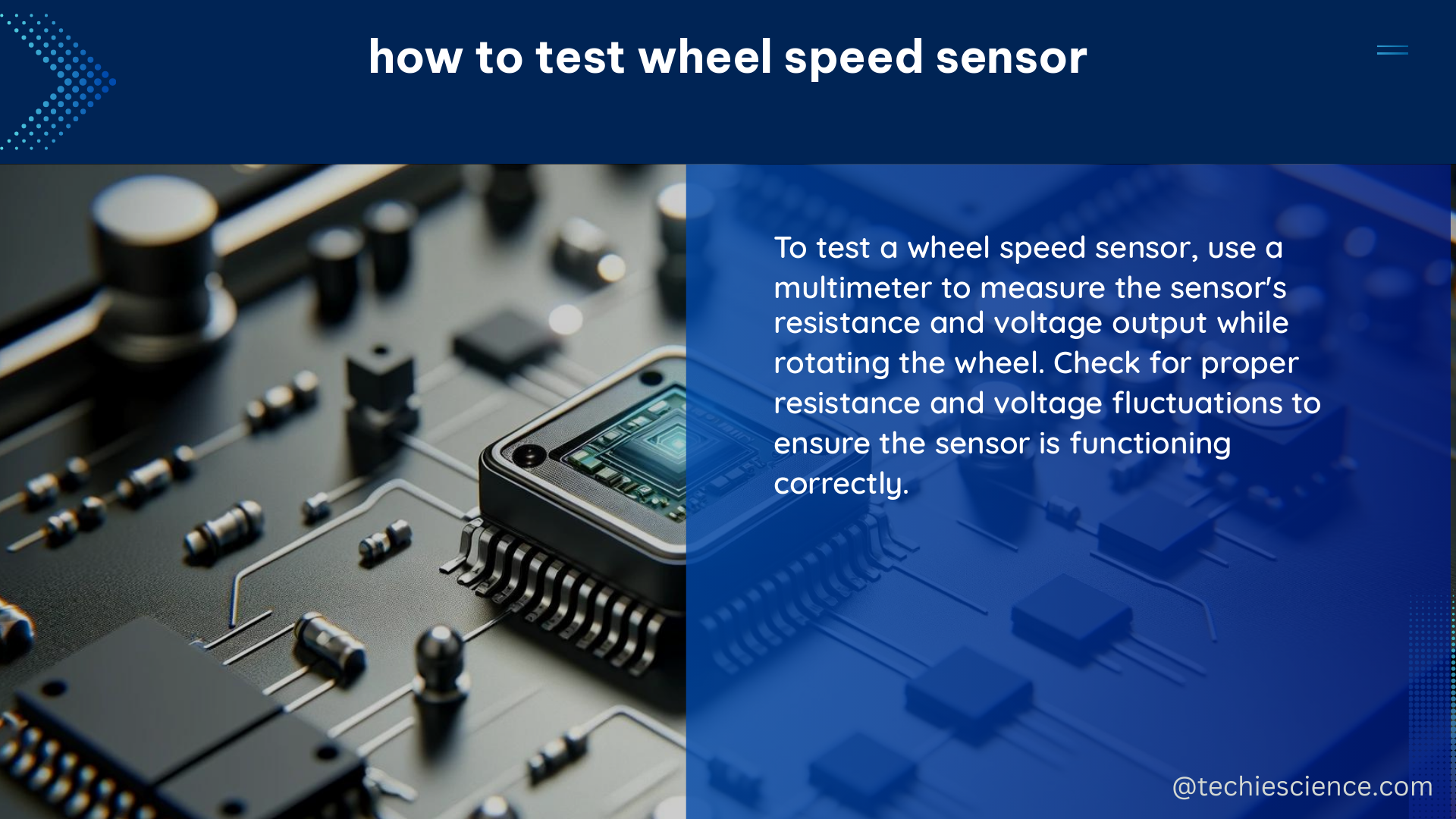Wheel speed sensors (WSS) are critical components in modern vehicles, responsible for providing the Anti-lock Braking System (ABS) and other electronic stability control systems with accurate wheel speed data. Proper testing and diagnosis of these sensors are essential for maintaining the safety and performance of your vehicle. In this comprehensive guide, we’ll explore the step-by-step process of testing wheel speed sensors, covering both passive and active sensor types.
Determining Passive or Active Wheel Speed Sensors
The first step in testing a wheel speed sensor is to determine whether it is a passive or active type. Both sensors have two wires and are located in the same position on the vehicle, but their operating principles differ.
Passive Wheel Speed Sensors
Passive wheel speed sensors are two-wire permanent magnet sensors that output an Alternating Current (AC) voltage when a toothed tone ring or reluctor passes by. The ABS module monitors the change in frequency and amplitude as the wheel rotates. These sensors may not display 0 mph, but rather 3-5 mph, which is considered normal. However, if there is an unwanted activation at low speeds, using a scan tool may not be the best method, and further tests are required.
Active Wheel Speed Sensors
Active wheel speed sensors output a digital signal, specifically a Direct Current (DC) square wave signal. The signal is different from that of a camshaft or crankshaft position sensor. The tone wheel on most active sensors is mounted in the grease seal for the bearing or inside the unitized hub unit. The tone wheel has magnetic teeth with alternating north and south poles, which the sensor detects.
Testing Passive Wheel Speed Sensors

To test a passive wheel speed sensor, follow these steps:
- Disconnect the sensor and/or harness from the circuit to avoid measuring resistance in the ABS unit.
- Use a multimeter to measure the resistance between the positive lead (connected to the signal wire) and the negative lead (connected to ground or a chassis ground).
- The typical reading for a passive wheel speed sensor should be between 1,000 and 2,500 ohms, which is the normal range for all passive sensors.
Testing Active Wheel Speed Sensors
To test an active wheel speed sensor, follow these steps:
- Use a multimeter to check the resistance between the two wires of the sensor.
- The resistance should be between 1.2 kΩ and 2 kΩ. If the resistance is outside this range, the sensor may be faulty and need to be replaced.
Testing Wheel Speed Sensors with an Oscilloscope
For a more comprehensive analysis, you can test wheel speed sensors using an oscilloscope, such as the PicoScope 4425A. Follow these steps:
- Connect the oscilloscope to the wheel speed sensor using a breakout lead.
- Adjust the AC coupling oscilloscope settings to read the wheel speed sensor.
- Observe the signal pattern generated by the sensor. If the signal is distorted or inconsistent, it may indicate a faulty sensor or harness.
Troubleshooting Wheel Speed Sensor Issues
When testing wheel speed sensors, keep the following troubleshooting tips in mind:
- Ensure the sensor and/or harness are disconnected from the circuit to avoid measuring resistance in the ABS unit.
- Check for clean, consistent signals from all wheel speed sensors. The signals should track each other, and when the vehicle is stopped, they should all evenly drop.
- For passive sensors, the typical resistance range is 1,000 to 2,500 ohms.
- For active sensors, the typical resistance range is 1.2 kΩ to 2 kΩ.
- If the resistance is outside the normal range, the sensor may be faulty and need replacement.
- Use an oscilloscope to observe the signal pattern and identify any distortion or inconsistencies that may indicate a problem with the sensor or harness.
By following these comprehensive steps, you can accurately test and diagnose any issues with wheel speed sensors, ensuring the proper functioning of your vehicle’s ABS and electronic stability control systems.
References:
- Hella Technical World – Check and Change ABS Sensor
- YouTube – How to Test Wheel Speed Sensors
- Tire Review – Wheel Speed Sensor Diagnostics for Meters and Scopes

The lambdageeks.com Core SME Team is a group of experienced subject matter experts from diverse scientific and technical fields including Physics, Chemistry, Technology,Electronics & Electrical Engineering, Automotive, Mechanical Engineering. Our team collaborates to create high-quality, well-researched articles on a wide range of science and technology topics for the lambdageeks.com website.
All Our Senior SME are having more than 7 Years of experience in the respective fields . They are either Working Industry Professionals or assocaited With different Universities. Refer Our Authors Page to get to know About our Core SMEs.